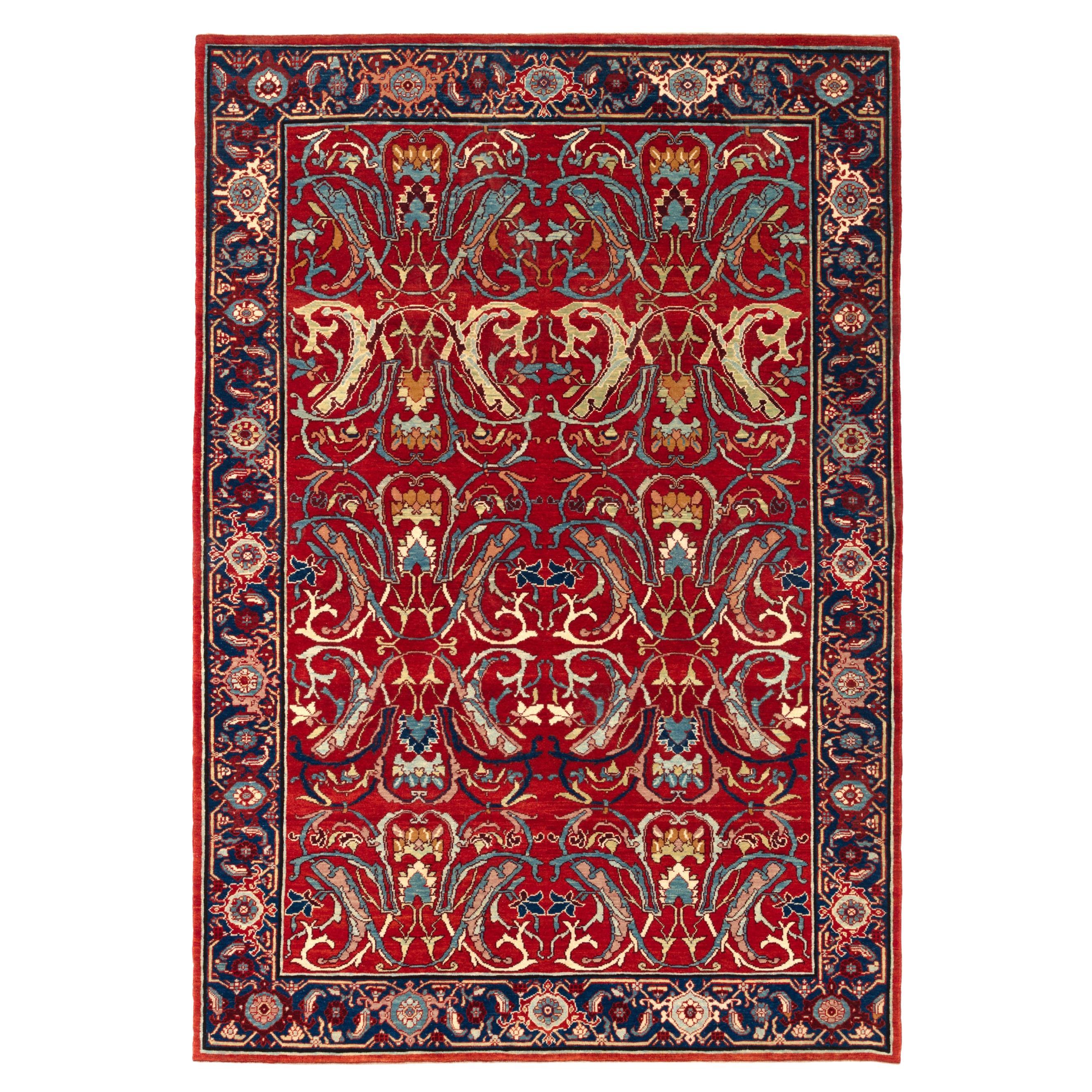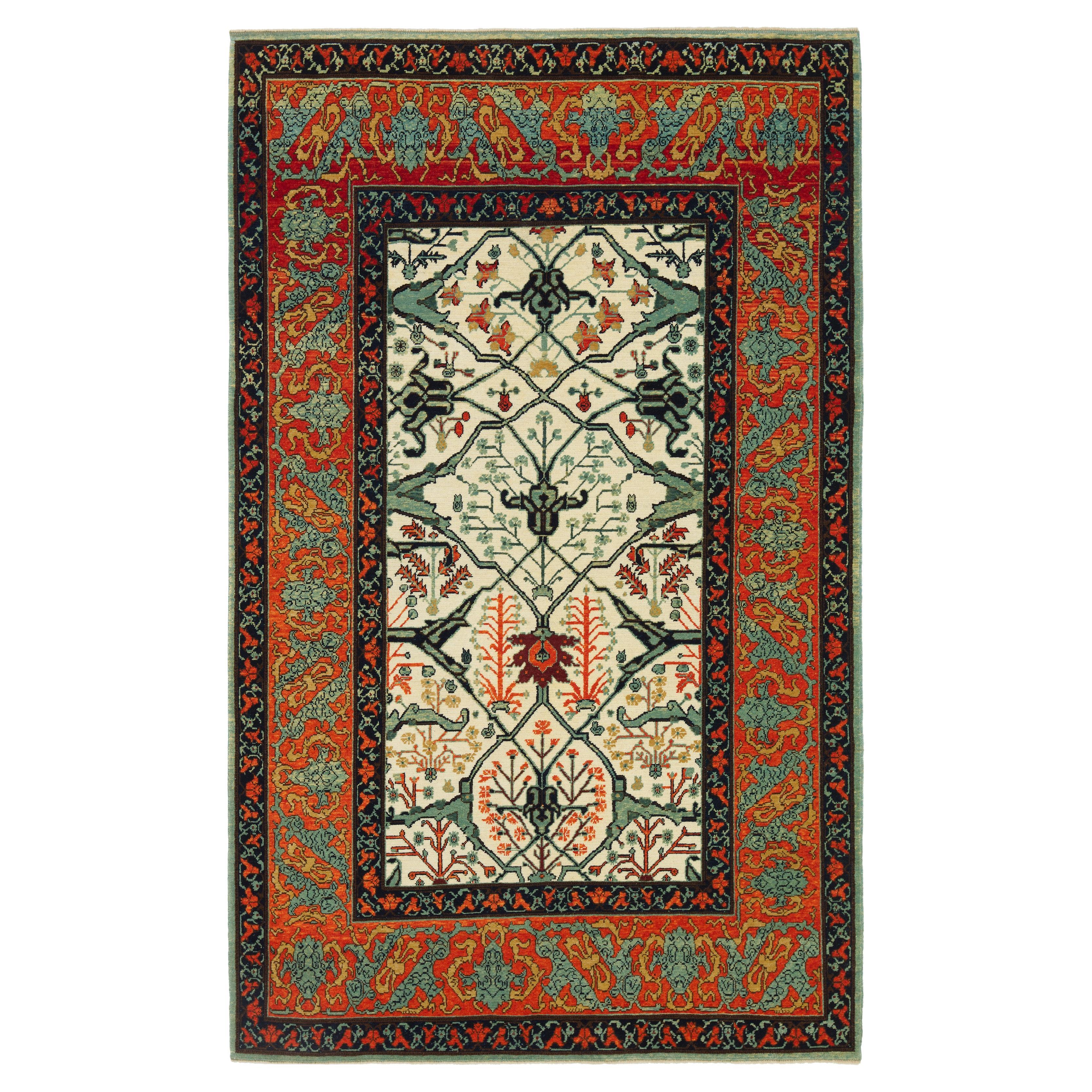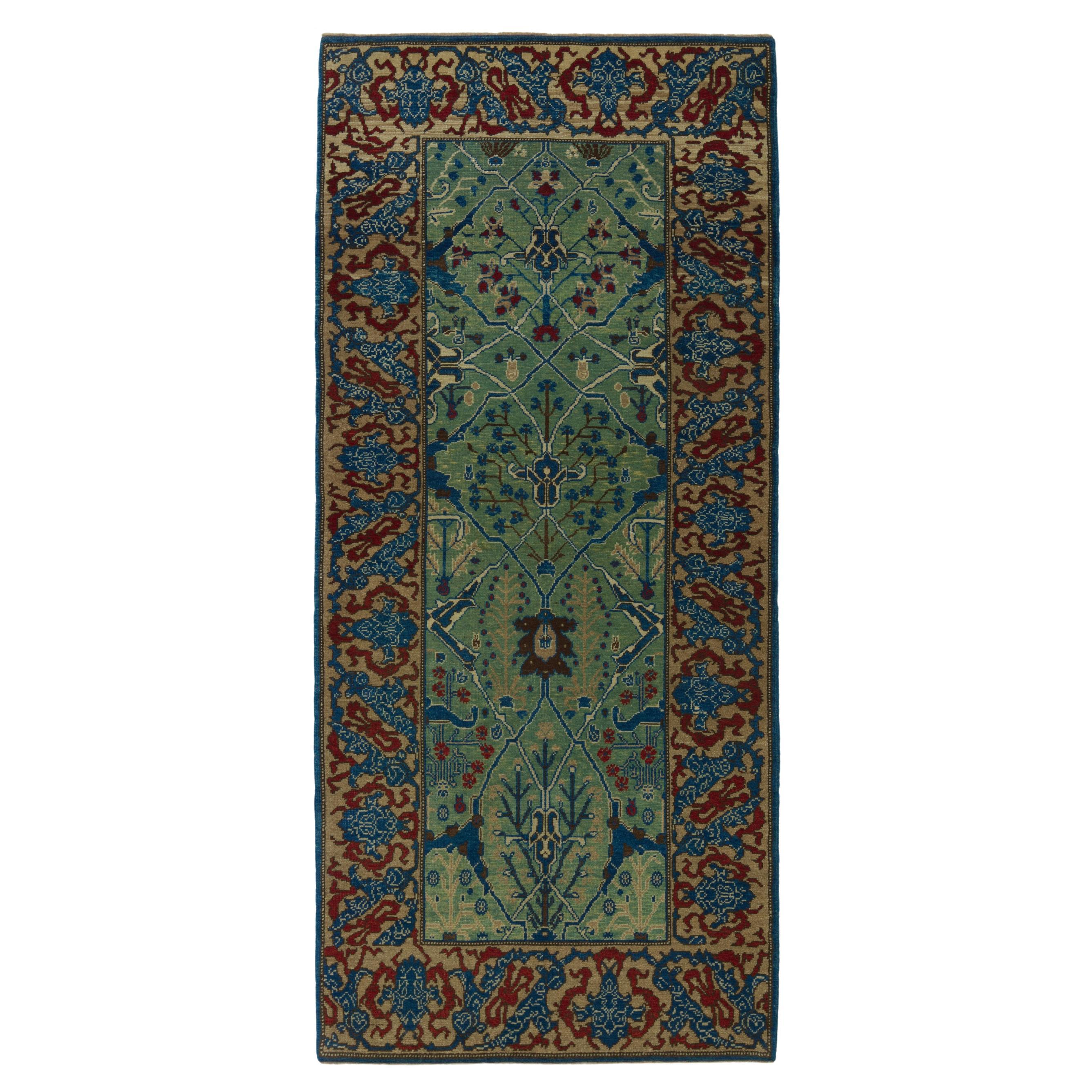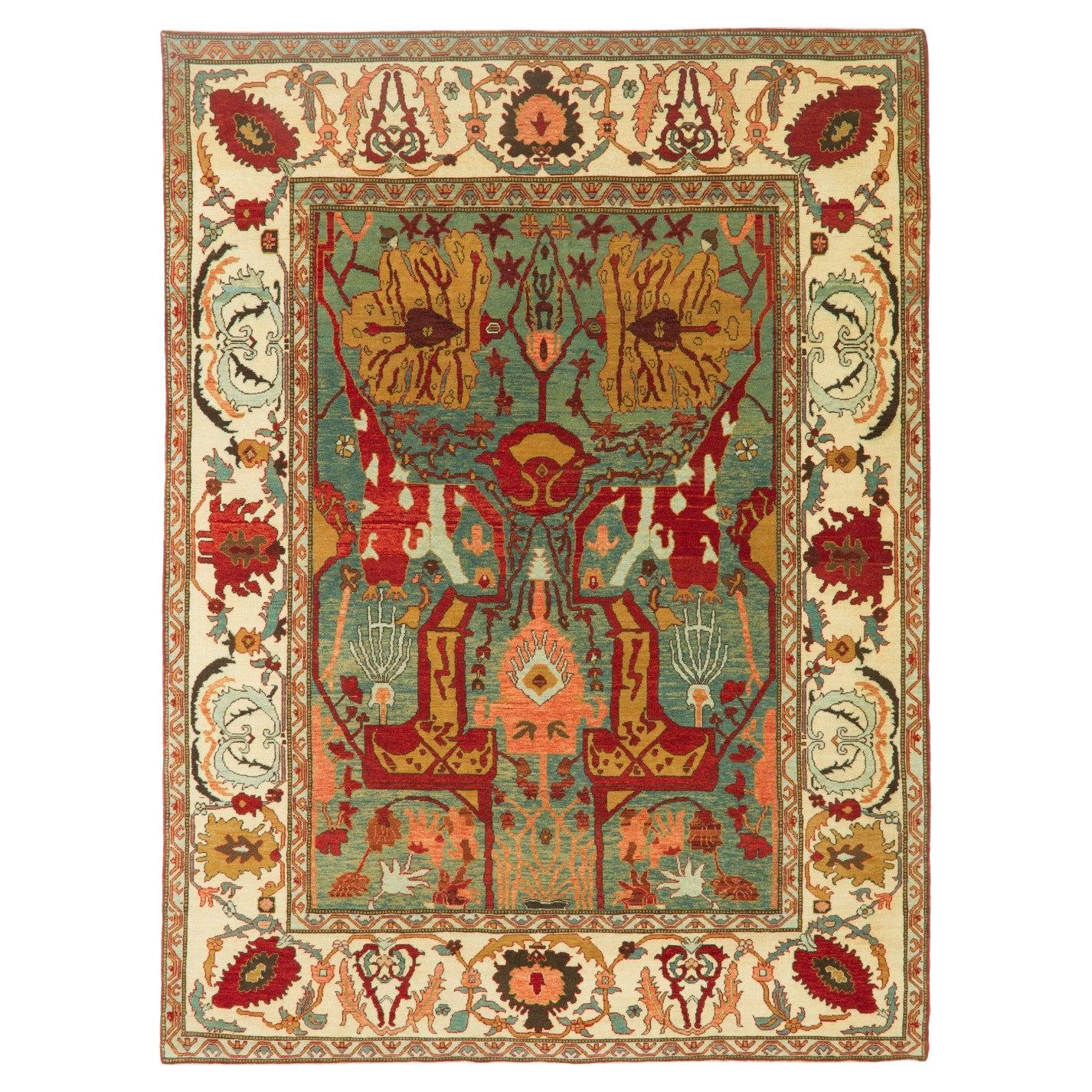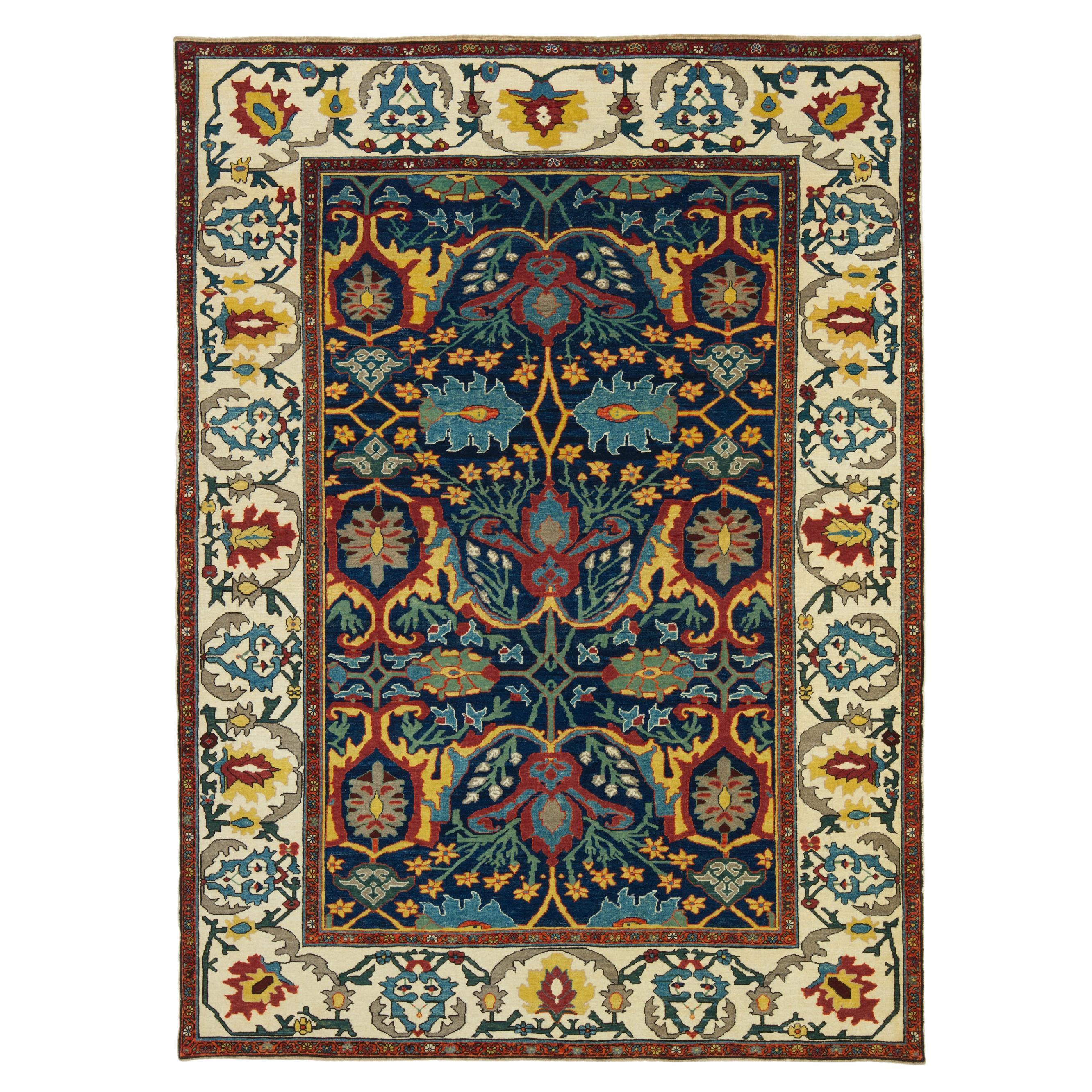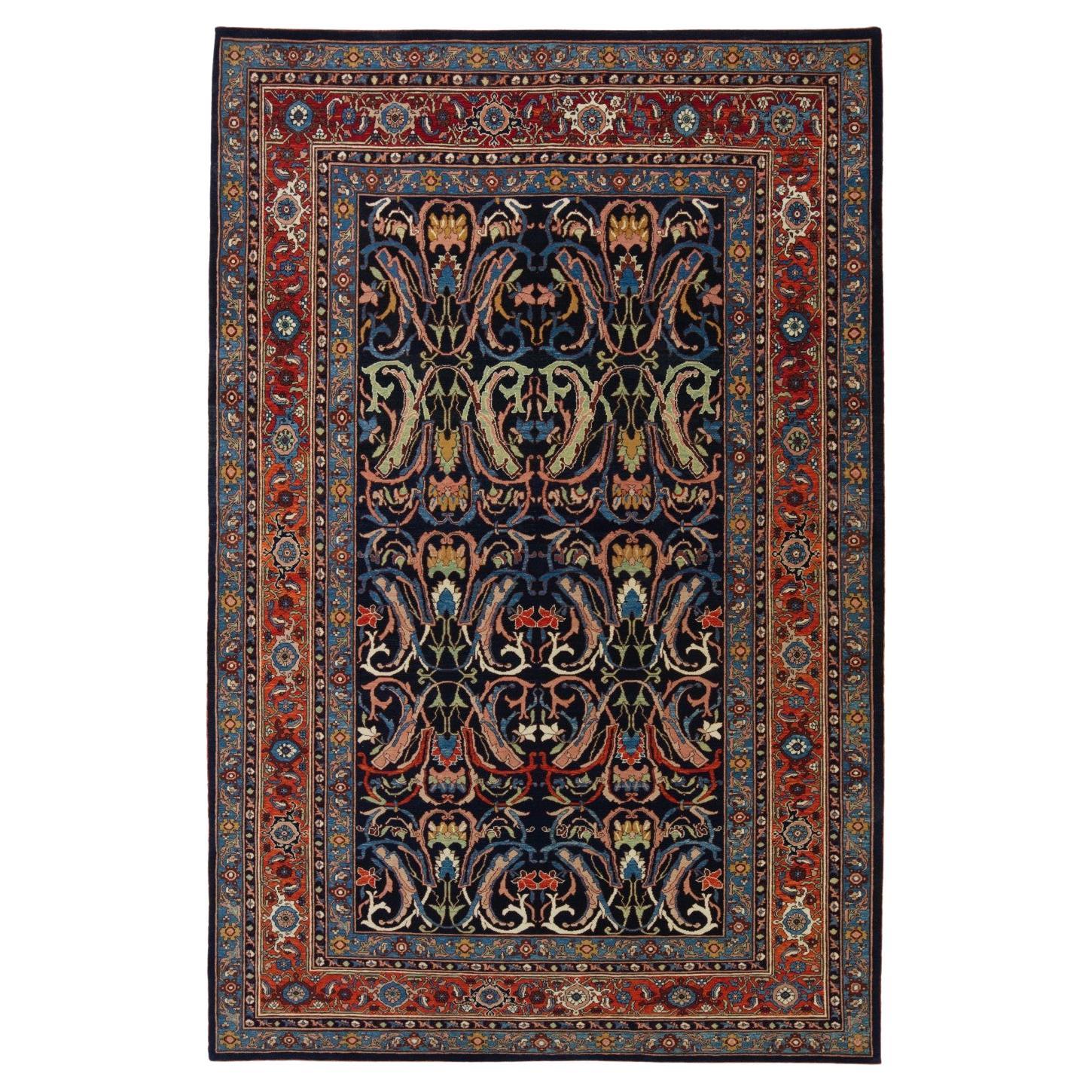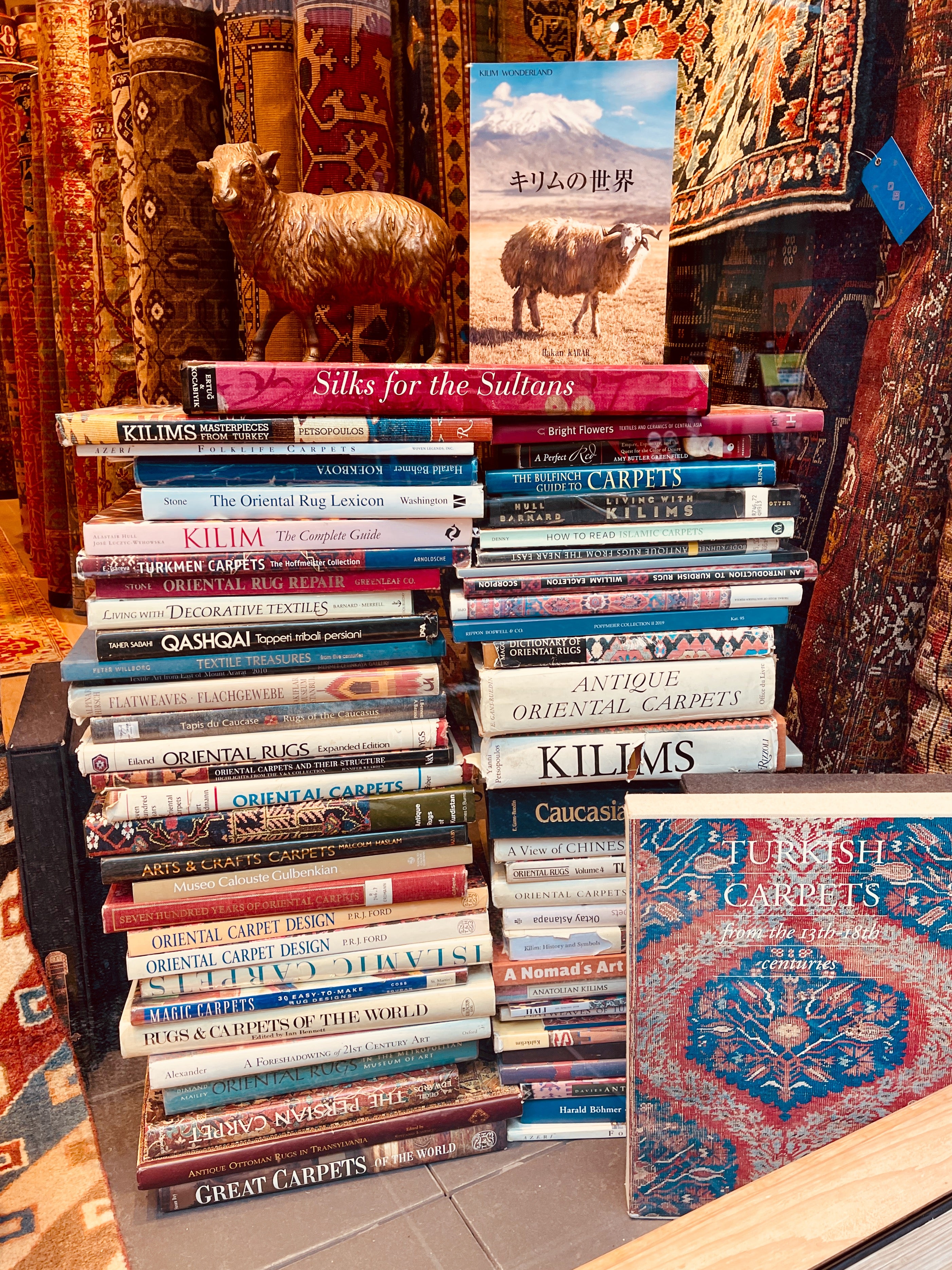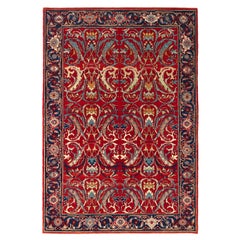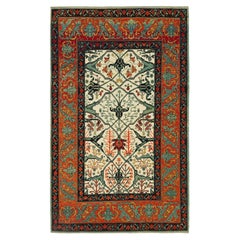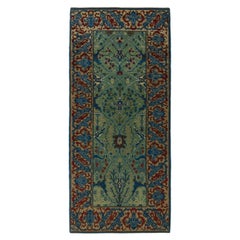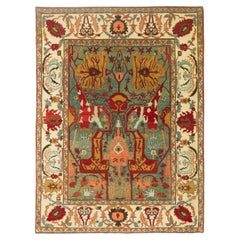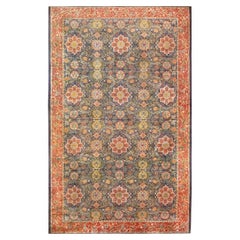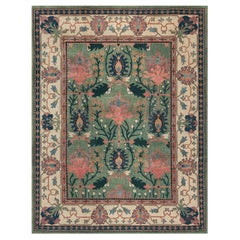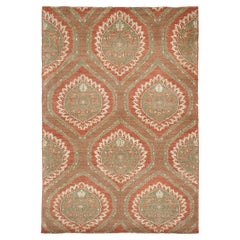Items Similar to Ararat Rugs Holland Park William Morris Carpet, Arts and Crafts, Natural Dyed
Video Loading
Want more images or videos?
Request additional images or videos from the seller
1 of 7
Ararat Rugs Holland Park William Morris Carpet, Arts and Crafts, Natural Dyed
$6,700
£5,122.51
€5,900.09
CA$9,388.75
A$10,481.66
CHF 5,492.23
MX$128,305.82
NOK 69,751.41
SEK 65,766.73
DKK 44,033
About the Item
The source of carpet comes from the book Arts & Crafts Carpets, by Malcolm Haslam, and David Black, 1991, fig.49. This Hammersmith carpet was designed by William Morris in 1882, in the United Kingdom. In 1887 English artist and bookbinder T.J. Cobden Sanderson, suggested that a new group be named the “Arts and Crafts Exhibition Society” As a result, he was the first to use the term “Art and Crafts” and also is credited with naming this new emerging movement. The Arts & Crafts movement was inspired by the degradation of product standards that resulted from the factory production age. The rise of machinery in manufacturing caused a noticeable decline in uniqueness and crafts. These anti-Industrial reformers promoted economic advancement and social change. They wanted to eliminate poor quality and “artificial” items from 19th century British society. They saw a plethora of uninteresting items on display at the Great Exhibition of 1851 and became inspired to launch a Campaign for originality and uniqueness.
William Morris was an English designer, as well as an uplifting social activist and writer. Morris is credited with sparking the rebirth of textile arts and traditional means of production. In 1861, Morris and a small group of designers opened an incredibly fashionable design company that grew to be largely successful. Morris left behind works in many different mediums such as textiles, books, furniture, stained glass, and area rugs. But in the end, he is most remembered for the magnificent wallpapers that he designed. He got much of his inspiration from the natural world. Through his interior decor pieces, Morris set out to convert rooms or spaces into meadows with beautiful trees meandering, vines, and plants. This concept of taking something Industrial and man-made, and converting it into something natural is what William Morris meant when he once said: “-any decoration is futile… when it does not remind you of something beyond itself.”
Morris was a huge commercial success and his works are some of the most sought-after pieces in the world of design and decor. He is also credited with almost single-handedly reviving the British textile arts as well as their methods of production. Morris was also severely critical of machine-made goods, exclaiming, “Today almost all wares that are made by civilized man are shabbily and pretentiously ugly.” Houses were filled “with tons and tons of unutterable rubbish,” which, he suggested, should be heaped onto a gigantic bonfire! “As a condition of life, production by machinery is altogether evil.” He masterminded one of the most well-known styles of Arts & Crafts, recognizable by its twisting and arching patterns and simple, elegant floral design prints. Although Morris believed that Persian carpets were the greatest ever made, he adopted the coarser Turkish (Ghiordes) knot for his hand knotted carpet manufacture. They were woven at a thickness of 25 knots to the square inch at that time. Morris & Co.’s rugs are reminiscent of Persian garden design carpets in that they are smartly styled depictions of English gardens. Donegal also started producing highly desirable Irish rugs in the late 19th century. The Donegal rugs were predominantly created by English architects C.F.A. Voysey and Gavin Morton. The handcrafted Voysey rugs are typically woven in England, Scotland, and Ireland. Voysey had a knack for using contrasting shapes to decorate flat monochromatic spaces. Dark outlines added a flair of drama to his signature pattern and Celtic rug designs. The first Donegal rugs were hand knotted over a dense wool foundation. Voysey’s designs inspired many other artists, leading to the appearance of a large volume of lookalike rugs. The design of the carpet is interpreted by our designers, and vivid colors are used for this carpet.
Color summary: 8 colors in total, the most used 4 colors are;
Russian green 418 (Henna – Indigo)
Dark Sky Blue 23 (Indigo)
Cactus Flower 1 (Cochineal)
Group: Arts & Crafts Movement
Area: Europe
Material of pile: natural dyed hand-spun wool
Material warp/weft: wool on cotton
Structure: Symmetrical knot on depressed warp inclining to the right
Knots Density: 34x40
Production Place: Southeastern Anatolia – Adiyaman Province
Stock Location: Tokyo
Size (EU): 175 X 302cm
Size (US): 5'8" X 9'10"
Area (EU): 5.3M²
Area (US): 56.9ft².
- Creator:Ararat Rugs (Manufacturer)
- Dimensions:Width: 68.9 in (175 cm)Length: 118.9 in (302 cm)
- Style:Arts and Crafts (In the Style Of)
- Materials and Techniques:
- Place of Origin:
- Period:
- Date of Manufacture:2021
- Production Type:New & Custom(One of a Kind)
- Estimated Production Time:Available Now
- Condition:
- Seller Location:Tokyo, JP
- Reference Number:Seller: 002251stDibs: LU8206232800052
ARARAT RUGS
We know and believe that the geography we come from, our past, and our lifestyle are the most important bond between us to carry the oriental carpet art and culture to the next generations along with our core values in our ongoing growth journey.
We are aware that the way to achieve this goal and carry this priceless art and culture to the future depends on a lot of work with all our people every day while adhering to our core values.
For us, art is meaningful in the sense that it brings together various cultures around the world. It is an honor for us that oriental carpet art and culture have been instrumental in this for centuries and that we are a part of this business.
We are tirelessly keeping an eye on auction house information around the world about carpets. New York's Metropolitan, London's Victoria & Albert Museums, and other famous art museums, as well as small specialized museums that house private collections, and books about oriental carpets to collect information on outstanding carpet designs and patterns from around the world. It's our Self-improving and Self-developing culture.
As Turkish Culture of Hospitality, the Kurdish Culture of Generosity, and as Japanese Culture of Business Punctuality; are the most important values that this multicultural background has taught and bequeathed to us. It is essential and valuable for us that you feel this feeling not only by looking at our oriental carpets but from the moment you contact us.
About the Seller
5.0
Platinum Seller
Premium sellers with a 4.7+ rating and 24-hour response times
Established in 1970
1stDibs seller since 2023
55 sales on 1stDibs
Typical response time: 3 hours
- ShippingRetrieving quote...Shipping from: Tokyo, Japan
- Return Policy
Authenticity Guarantee
In the unlikely event there’s an issue with an item’s authenticity, contact us within 1 year for a full refund. DetailsMoney-Back Guarantee
If your item is not as described, is damaged in transit, or does not arrive, contact us within 7 days for a full refund. Details24-Hour Cancellation
You have a 24-hour grace period in which to reconsider your purchase, with no questions asked.Vetted Professional Sellers
Our world-class sellers must adhere to strict standards for service and quality, maintaining the integrity of our listings.Price-Match Guarantee
If you find that a seller listed the same item for a lower price elsewhere, we’ll match it.Trusted Global Delivery
Our best-in-class carrier network provides specialized shipping options worldwide, including custom delivery.More From This Seller
View AllArarat Rugs Bidjar Sweeping Arabesques Rug Persian Revival Carpet Natural Dyed
By Ararat Rugs
Located in Tokyo, JP
This is a repeat of large sweeping arabesques in muted colors adorning the red field rug designed in the early 20th century that originates from the Bidjar region in northwestern Ira...
Category
21st Century and Contemporary Turkish Revival Persian Rugs
Materials
Wool, Natural Fiber, Organic Material
Ararat Rugs Gerous Arabesque Rug, Antique Persian Revival Carpet, Natural Dyed
By Ararat Rugs
Located in Tokyo, JP
The source of the rug comes from the book Islamic Carpets, Joseph V. McMullan, Near Eastern Art Research Center Inc., New York 1965 nr.22. This is a system of arabesque-designed 19th...
Category
21st Century and Contemporary Turkish Revival Persian Rugs
Materials
Wool, Natural Fiber, Organic Material
Ararat Rugs Gerous Arabesque Rug, Antique Persian Revival Carpet, Natural Dyed
By Ararat Rugs
Located in Tokyo, JP
The design source of the rug comes from the book Islamic Carpets, Joseph V. McMullan, Near Eastern Art Research Center Inc., New York 1965 nr.22. This is a system of arabesque-design...
Category
21st Century and Contemporary Turkish Revival Persian Rugs
Materials
Wool, Natural Fiber, Organic Material
Ararat Rugs Gerous Arabesque Rug, Antique Persian Revival Carpet, Natural Dyed
By Ararat Rugs
Located in Tokyo, JP
The source of the rug comes from the book Islamic Carpets, Joseph V. McMullan, Near Eastern Art Research Center Inc., New York 1965 nr.22. This is a system of arabesque-designed 19th...
Category
21st Century and Contemporary Turkish Revival Persian Rugs
Materials
Wool, Natural Fiber, Organic Material
Ararat Rugs Bidjar Rug - 19th Century Design Persian Revival Carpet Natural Dyed
By Ararat Rugs
Located in Tokyo, JP
This is a Bidjar rug designed in the 19th century from the Bidjar region, also known as Bijar, which is a region in northwestern Iran known for producing some of the finest and most ...
Category
21st Century and Contemporary Turkish Revival Persian Rugs
Materials
Wool, Natural Fiber, Organic Material
Ararat Rugs Bidjar Sweeping Arabesques Rug Persian Revival Carpet Natural Dyed
By Ararat Rugs
Located in Tokyo, JP
This is a repeat of large sweeping arabesques in muted colors adorning the midnight blue field rug designed in the early 20th century that originates from the Bidjar region in northw...
Category
21st Century and Contemporary Turkish Revival Persian Rugs
Materials
Wool, Natural Fiber, Organic Material
You May Also Like
Antique Arts & Crafts William Morris Design Rug. Size: 19 ft x 30 ft
By William Morris (English)
Located in New York, NY
Magnificent and rare large oversized antique Arts & Crafts William Morris Design rug, country of origin / rug type: Irish rug, circa date: L...
Category
Antique Late 19th Century Irish Arts and Crafts Western European Rugs
Materials
Wool
Mansour Handwoven Arts & Crafts Donegal Rug
Located in West Hollywood, CA
Originally designed and crafted in Donegal Ireland in early 1900s, this magnificently decorative brand new Donegal-inspired carpet was hand woven and created in Kashmir. This Arts & ...
Category
2010s Indian Western European Rugs
Materials
Wool
Mehraban Natural Dye Transitional Style Arts and Crafts Rug D5207
Located in WEST HOLLYWOOD, CA
A transitional rug with a fastidious pattern of foliage filaments made from natural dyes is a must-have. The design is enhanced by the use of handcrafted wool. The crimson red and fe...
Category
2010s Afghan Central Asian Rugs
Materials
Wool
Vintage Indian Rug with Arts & Crafts Style Inspired by William Morris
By William Morris (English)
Located in Dallas, TX
77517, vintage Indian rug with Arts & Crafts style inspired by William Morris. The architectural elements of naturalistic forms combined with Arts & Crafts style, this hand knotted w...
Category
Mid-20th Century Indian Arts and Crafts Indian Rugs
Materials
Wool
$2,999 Sale Price
20% Off
New Turkish Oushak Rug with Arts & Crafts Style Inspired by William Morris
Located in Dallas, TX
51596 new Turkish Oushak rug with Arts & Crafts style Inspired by William Morris. The architectural elements of naturalistic forms combined with Arts & Crafts style, this new Turkish...
Category
21st Century and Contemporary Turkish Oushak Turkish Rugs
Materials
Wool
$7,999 Sale Price
20% Off
Antique Indian Agra William Morris Inspired Gallery Rug with Arts & Crafts Style
By Charles Voysey, William Morris (English)
Located in Dallas, TX
72059 Antique Indian Agra Rug, 06'00 x 15'00. Step into the timeless artistry of Mughal India with this exquisite hand-knotted wool antique Indian Agra rug, a remarkable piece that e...
Category
Early 20th Century Indian Arts and Crafts Indian Rugs
Materials
Wool
$5,200 Sale Price
20% Off
More Ways To Browse
Holland And Company
Arts And Crafts Stained Glass
Dutch Green Glass
Scottish Arts Crafts
Stained Glass Dutch
Wool Black Book
Flair Holland
Company C Rug
Tree Of Life Fiber Art
Stained Glass Scottish
New Britain Machine Co
Cactus Wallpaper
Sanderson Wells
Miami Vintage Furniture
Netherlands Dining Chairs
Silver Candy
Tubular Table Base
18th Century Chinoiserie Furniture
